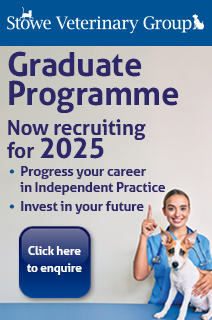
While working in a busy veterinary practice can be fulfilling, it can also easily become chaotic, rushed and stressful. With so many different clients arriving throughout the day, for all manner of issues and procedures, it can be easy to feel that you have not provided them with the time and care they deserve.
One of the most proactive ways to combat this is through effective appointment management. By having an efficient and practice-wide agreed appointment management system, you can ensure that you are using your team’s time efficiently, the work-day is better structured and that your patients are getting as much of your time as needed to resolve their conditions.
Before organising your management system, it is important to be aware of the Peaks and Troughs cycle. The Peaks and Troughs cycle refers to an appointment system that is not structured correctly, and therefore the availability of different team members fluctuates widely. At times team members can be stressed and over-worked, rushing from one task to another without the proper time to focus on their work. Other times they may be bored, with an empty waiting room and no tasks to do. Neither of these situations are beneficial to team morale – being overly busy can be stressful, but being under-utilised can feel disheartening. A day which is regularly hectic would be considered a ‘peak’, whereas a day which is often less busy is a ‘trough’. You can monitor this easily by taking notice of your daily schedules, and identifying if anyone is going through this cycle. It is easy to fall into this system, but very important to get out of it.
Every practice is different, but there are some considerations you can take to make your appointment management system work for you:
- Placing appointments on your practice calendar is not ‘one size fits all’. Train receptionists to understand what might take longer in an appointment (a difficult customer, a chatty owner or hefty paperwork) and factor this into the timeframe you offer them.
- Where a chatty client risks knocking you off schedule, have a plan in place to cut an appointment short if necessary. This can be as simple as a veterinary nurse or receptionist coming into the appointment room to restock or ask the veterinary surgeon a question, which can be enough to hint to the client that it is time to go.
- Following an appointment, consider carefully when you want the client to book their next appointment. If you are having a busy day, and you ask each client to ‘come back in seven days’, you are setting yourself up for another busy day next week. Consider re-phrasing this as ‘5-7 days’ or ‘7-10 days’, as appropriate. Adding this element of flexibility enables you to schedule their next appointment on a ‘trough’ day rather than setting up a ‘peak’ next week.
- Alongside your scheduled appointments with your clients, it can be beneficial to schedule in ‘unavailable’ or ‘emergency only’ appointments on your calendar. Having these scheduled, especially on days which can fill up quickly, not only allows you to catch up on any paperwork that may have built up from previous clients, but can give you the availability to handle any emergency cases that may come in during this time.


